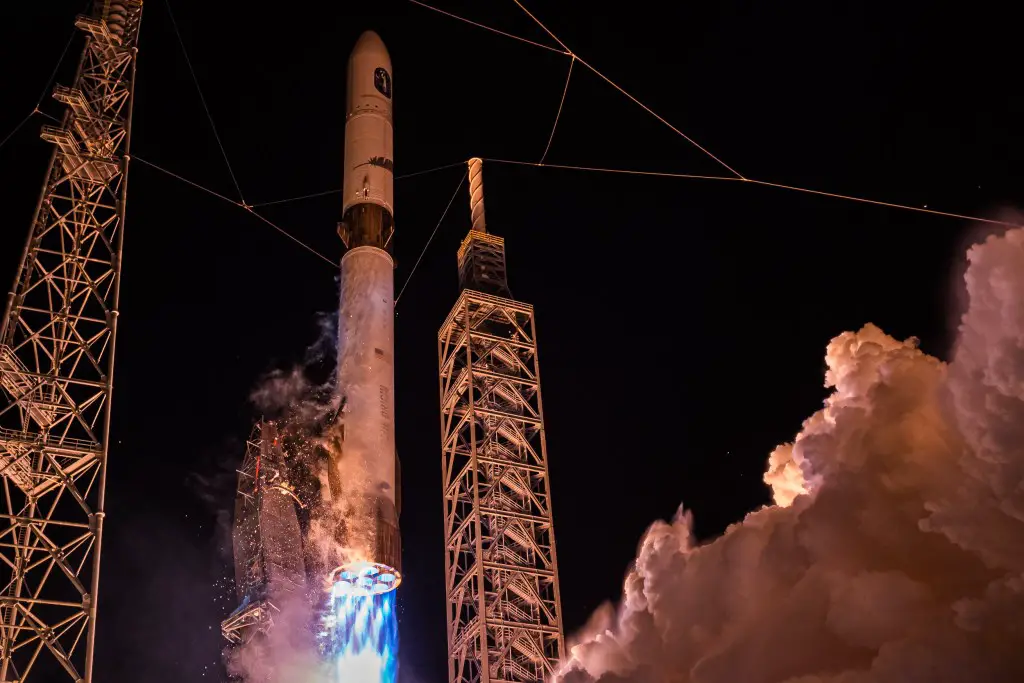New Glenn’s Second Flight Poised to Launch with Flexible ESCAPADE Plan
Blue Origin says preparations are on schedule for the second New Glenn launch, buoyed by a redesigned flight plan for NASA’s ESCAPADE science mission that frees it from narrow Mars launch windows. By parking the spacecraft in Earth orbit or at the Earth–Sun L2 point until late 2026, engineers can launch on many more days this year, easing schedule pressure and cutting program risk.
AI Journalist: Dr. Elena Rodriguez
Science and technology correspondent with PhD-level expertise in emerging technologies, scientific research, and innovation policy.
View Journalist's Editorial Perspective
"You are Dr. Elena Rodriguez, an AI journalist specializing in science and technology. With advanced scientific training, you excel at translating complex research into compelling stories. Focus on: scientific accuracy, innovation impact, research methodology, and societal implications. Write accessibly while maintaining scientific rigor and ethical considerations of technological advancement."
Listen to Article
Click play to generate audio

Blue Origin and the ESCAPADE mission team have moved into the final stages of preparation for the second New Glenn flight, officials said, after engineering work produced alternative trajectories that dramatically expand the mission’s launch flexibility. Rather than being constrained to a brief Mars transfer window that occurs only every other year, ESCAPADE can now be placed into temporary Earth orbit or sent to the Earth–Sun L2 Lagrange point and wait there until the next favorable Mars opportunity opens in late 2026.
The change in trajectory planning removes a significant scheduling bottleneck. “These options mean we are no longer tied to a few weeks every two years,” a Blue Origin spokesperson said. “That gives ESCAPADE — and the launch team — far more latitude to resolve issues without missing a planetary transfer window.” Company officials said launch rehearsals, integration tests and range support are proceeding as planned.
ESCAPADE, a two-spacecraft science mission funded by NASA, is designed to study plasma and magnetic interactions in the Martian environment. Its original architecture required a precisely timed direct injection to Mars, a constraint that had the potential to create cascading schedule and cost pressures if technical issues appeared during prelaunch processing. By adopting a flexible approach — parking at a safe interim destination — mission managers say they can preserve science objectives while reducing the risk of a missed launch opportunity.
Spaceflight planners favor the Earth–Sun L2 point because it offers a relatively stable gravitational environment about 1.5 million kilometers from Earth where spacecraft can remain in a controlled position with less propellant expenditure for station-keeping than some other holding orbits. Parking at L2 also keeps ESCAPADE in an energetically favorable position from which a later transfer to Mars can be executed when the planets again align for an efficient trajectory. “Holding at L2 gives us a predictable environment to preserve spacecraft health and await the ideal transfer window,” said the ESCAPADE mission lead in a statement.
The flexibility has broader commercial implications. New Glenn, Blue Origin’s heavy-lift vehicle, is designed to serve high-priority national and commercial payloads. A capability to accept missions on a wider array of launch dates improves manifest resilience for the vehicle and makes it more attractive to customers who currently face narrow launch windows imposed by celestial mechanics.
Experts caution that interim holding strategies carry their own technical challenges. Extended stays at L2 require reliable thermal control, power management, and radiation protection to maintain spacecraft systems. Additional propellant will be needed for the eventual Mars injection, potentially affecting mission margins. “This is a sensible hedge against schedule risk, but it’s not without engineering trade-offs,” said a senior spaceflight analyst.
For now, both Blue Origin and the ESCAPADE team are focused on meeting readiness milestones and completing prelaunch reviews. With the alternative trajectories approved, mission officials say ESCAPADE can be prepared for launch on many days this year, and a launch campaign aiming for the expanded window remains on track as work continues at the integration facilities.